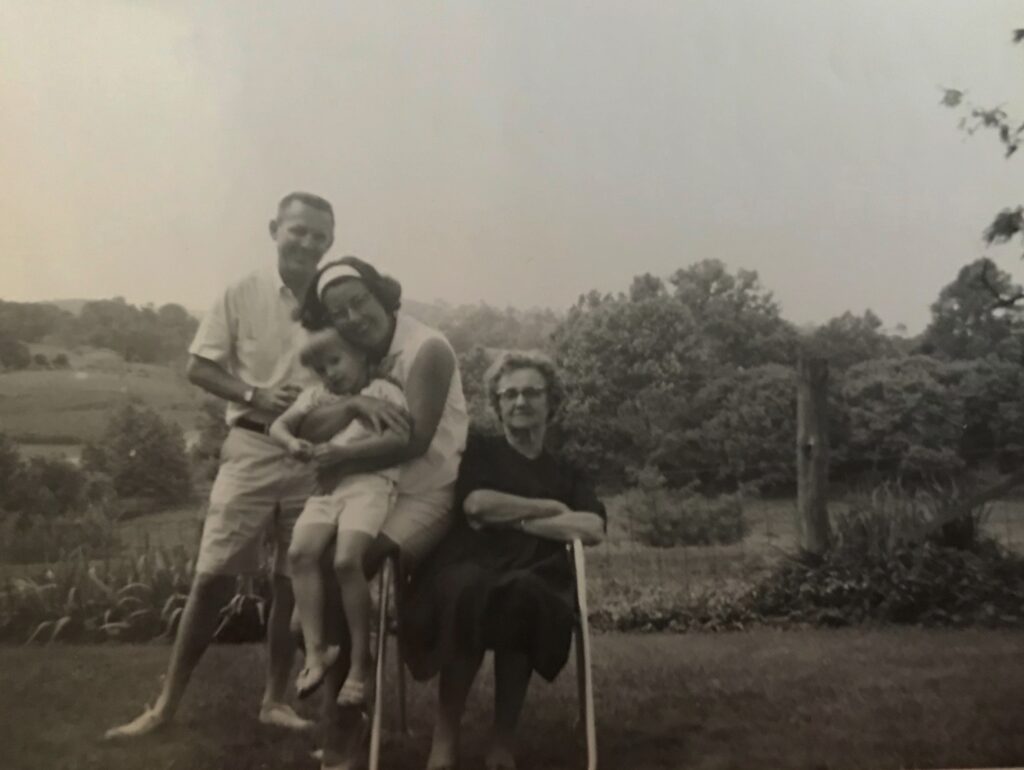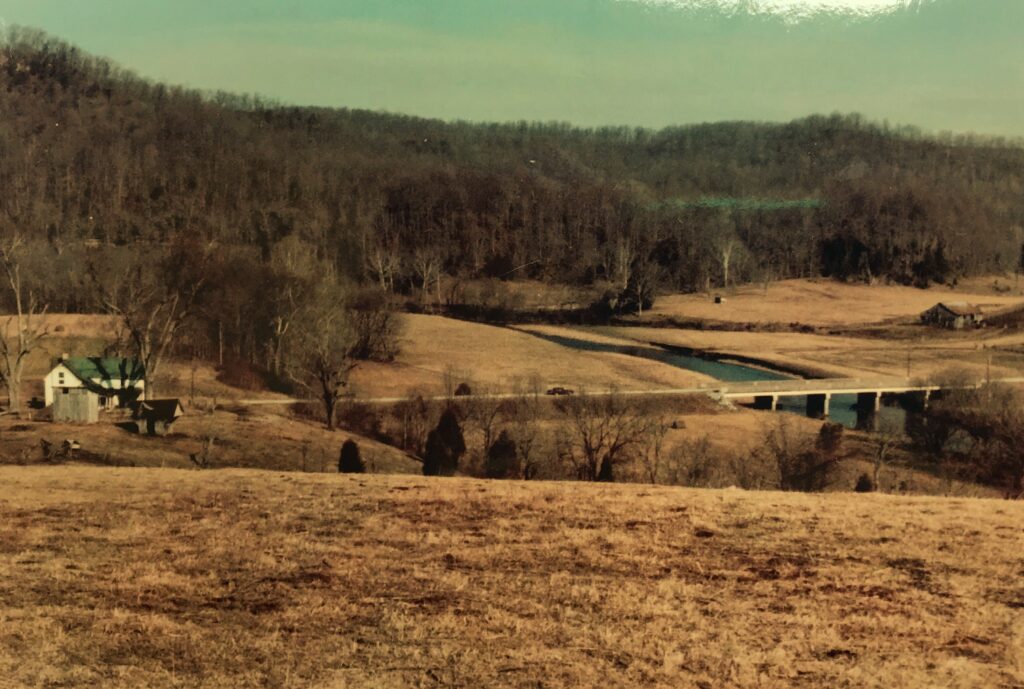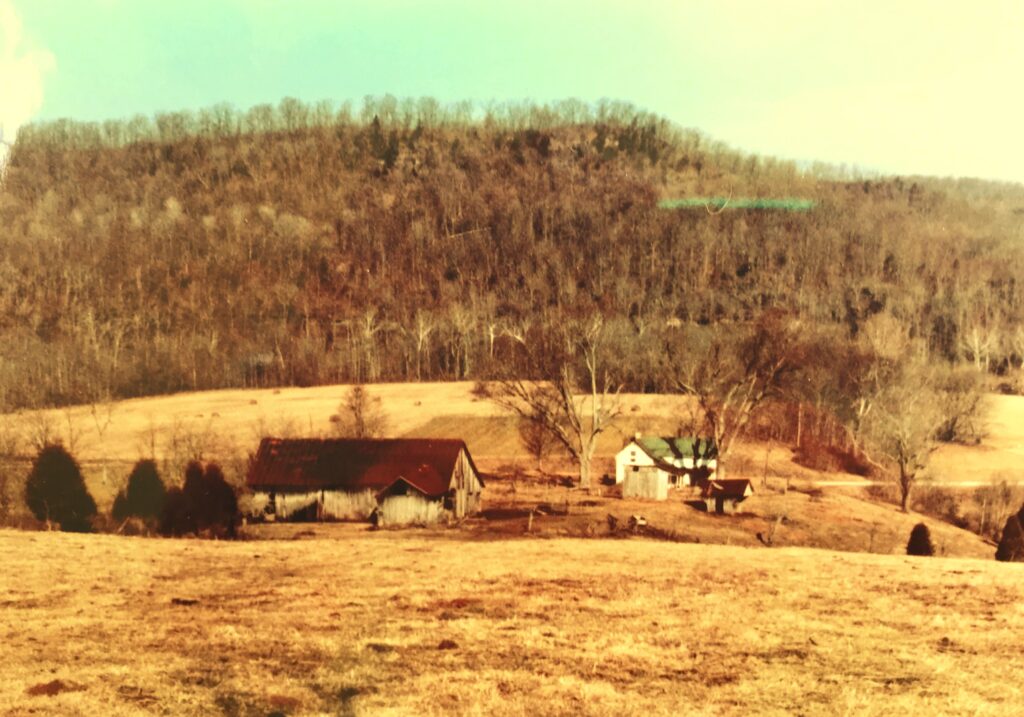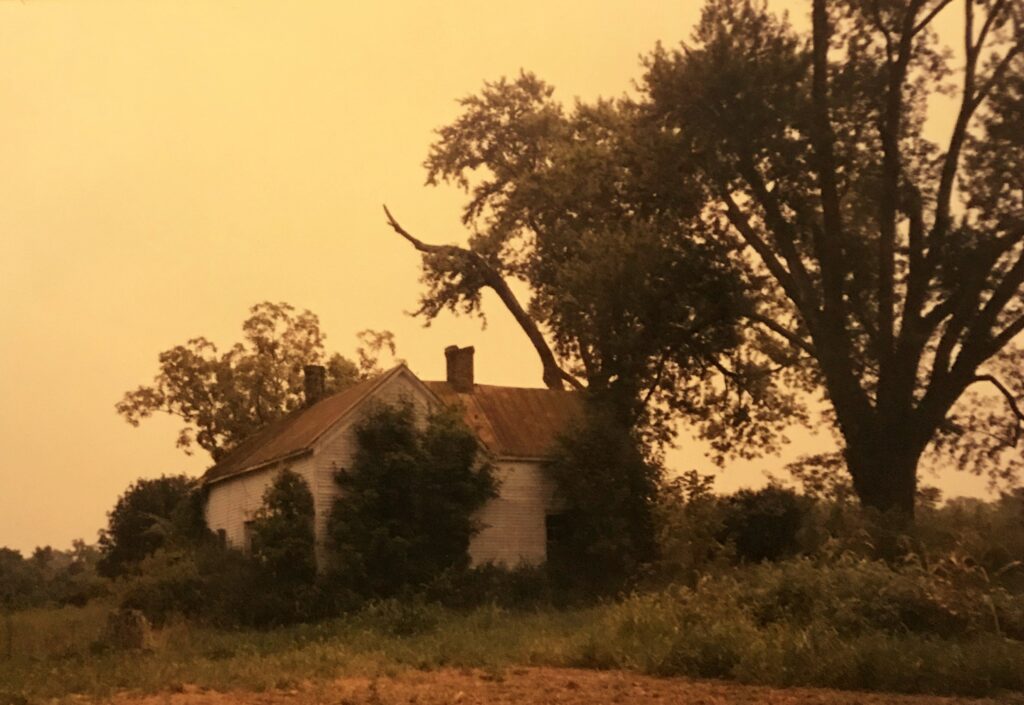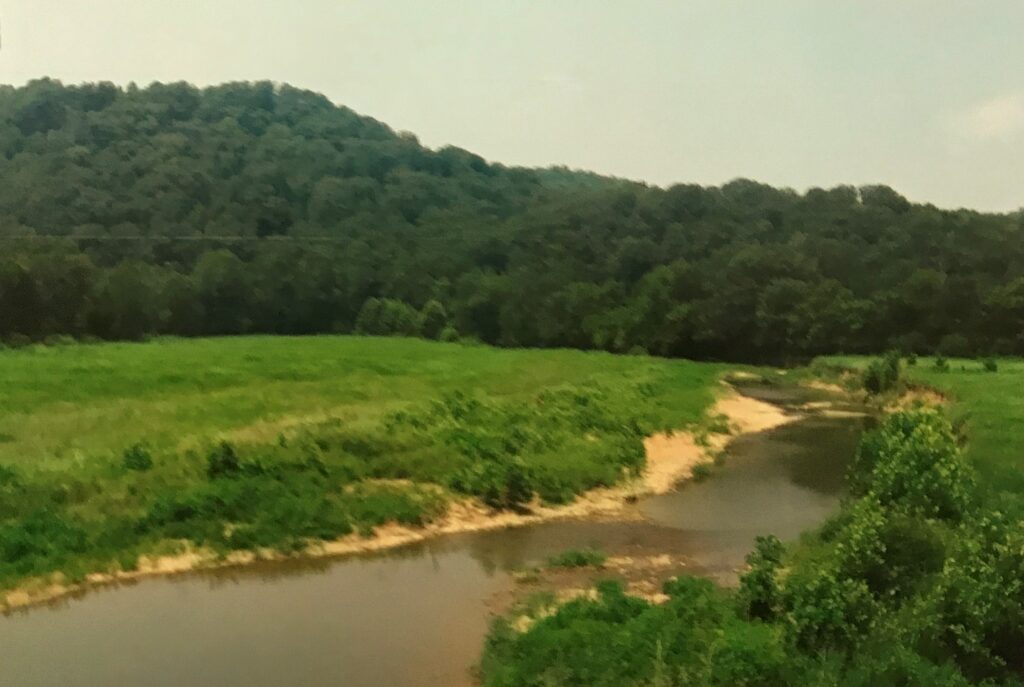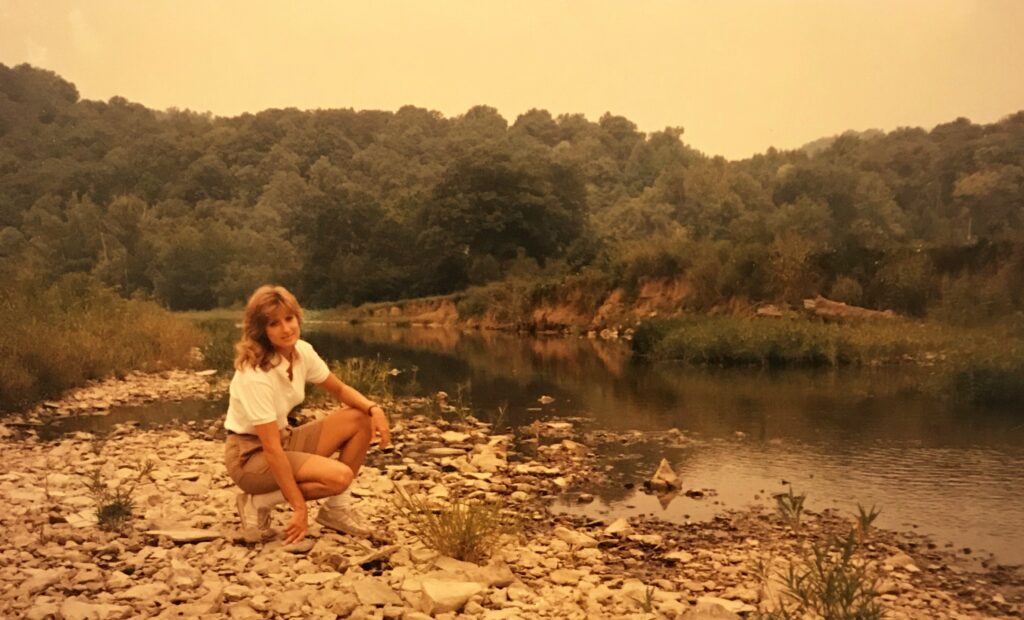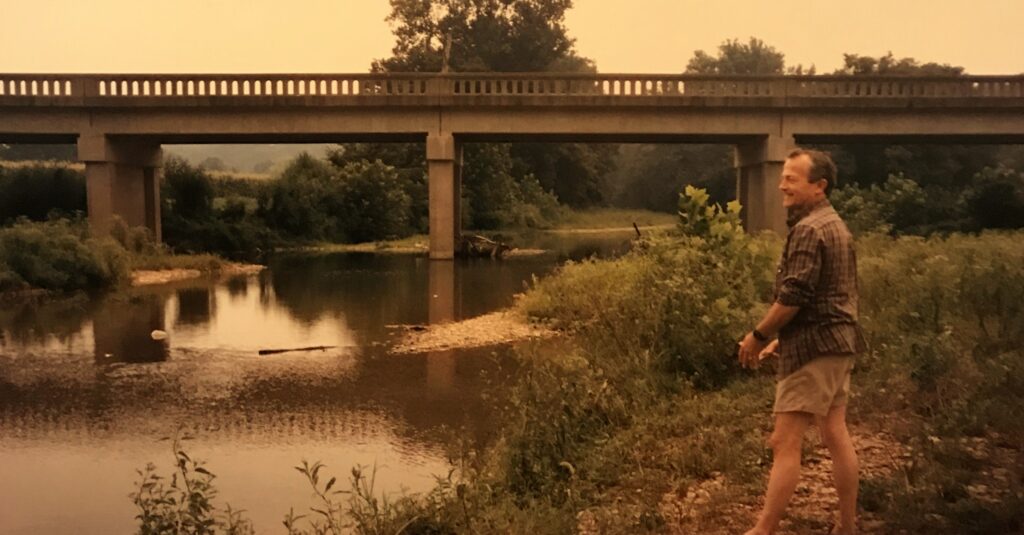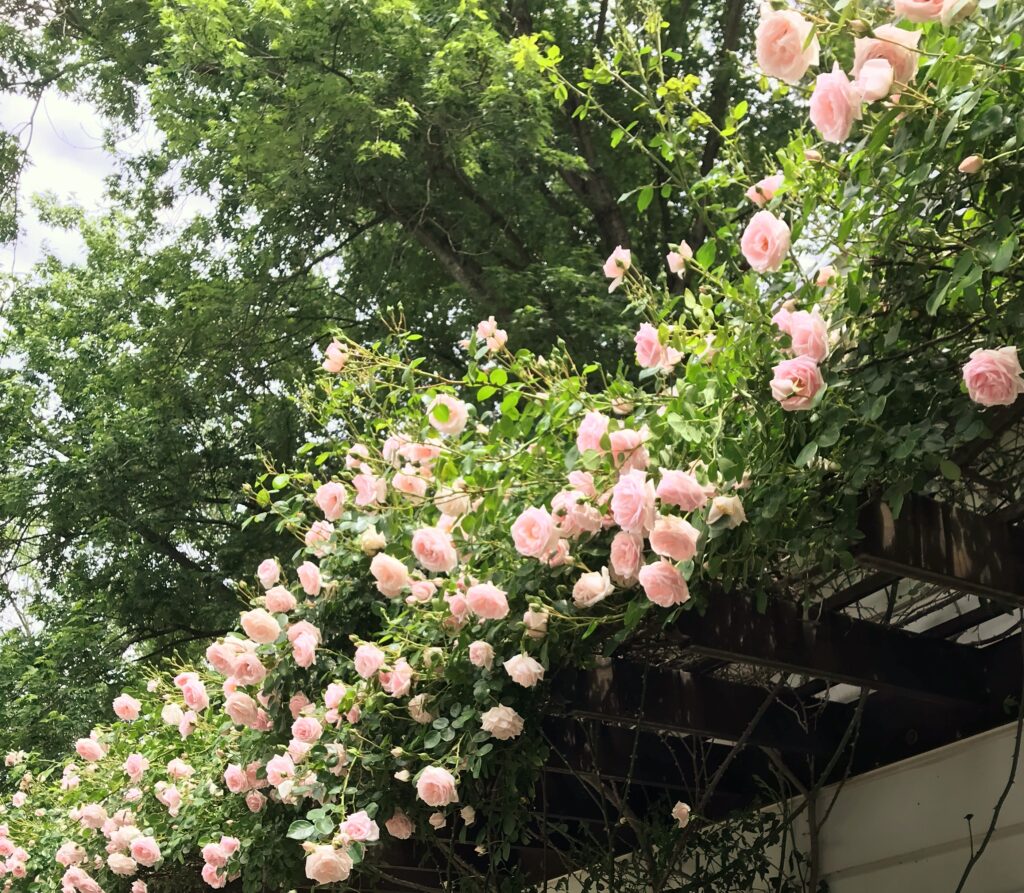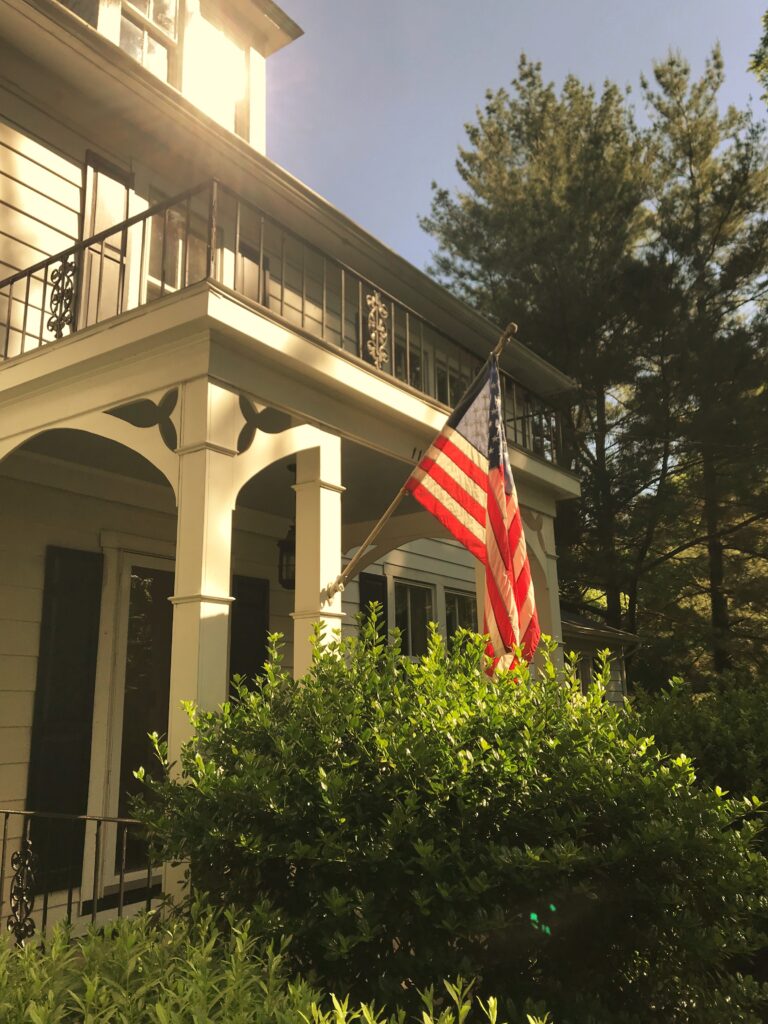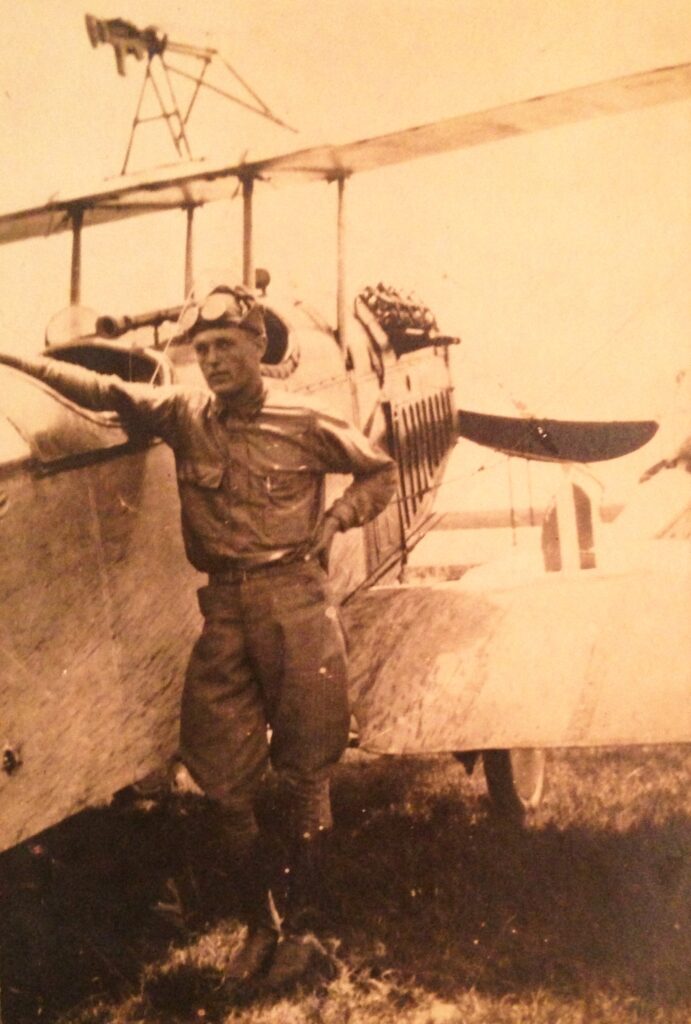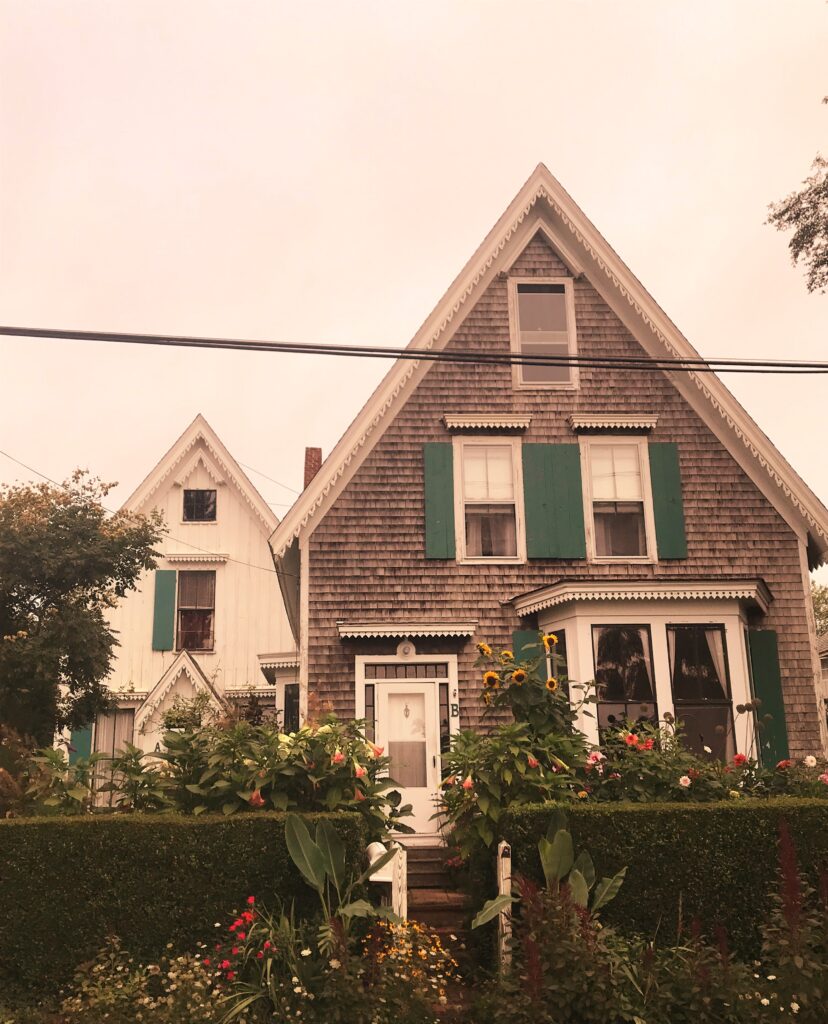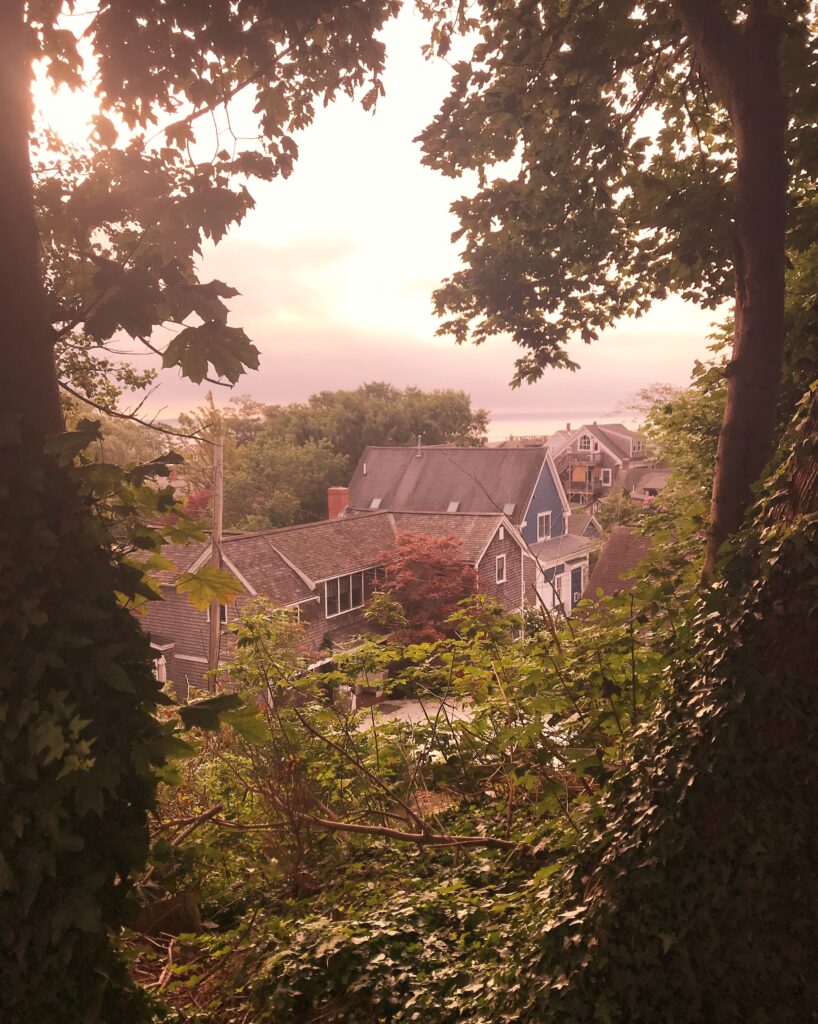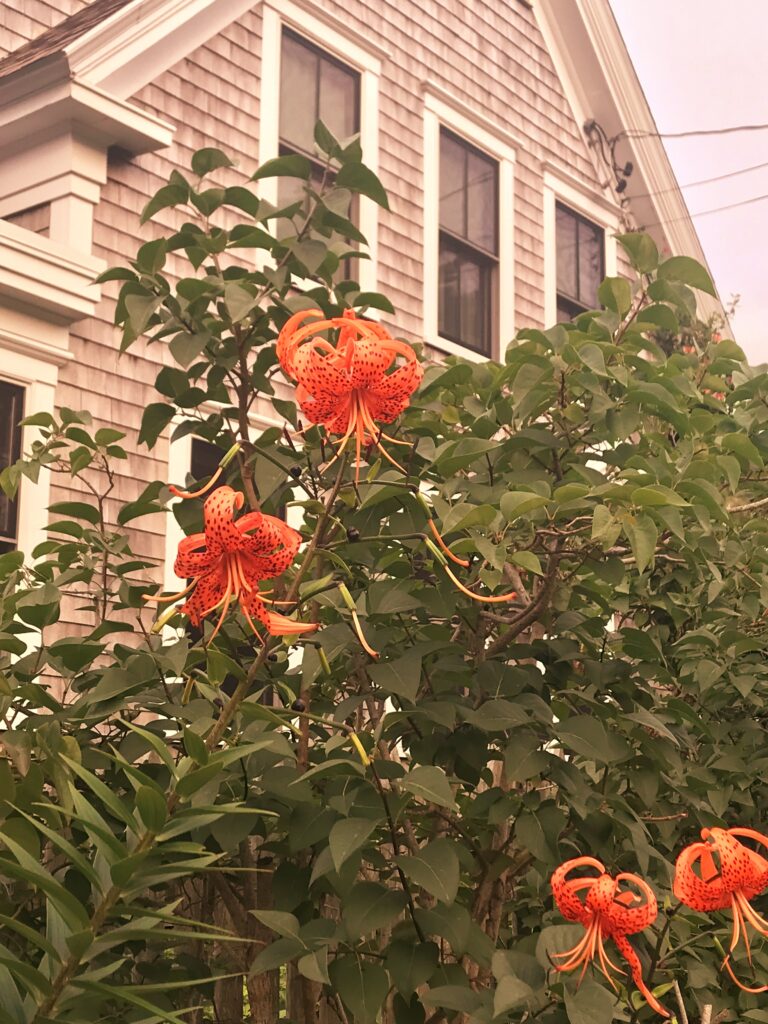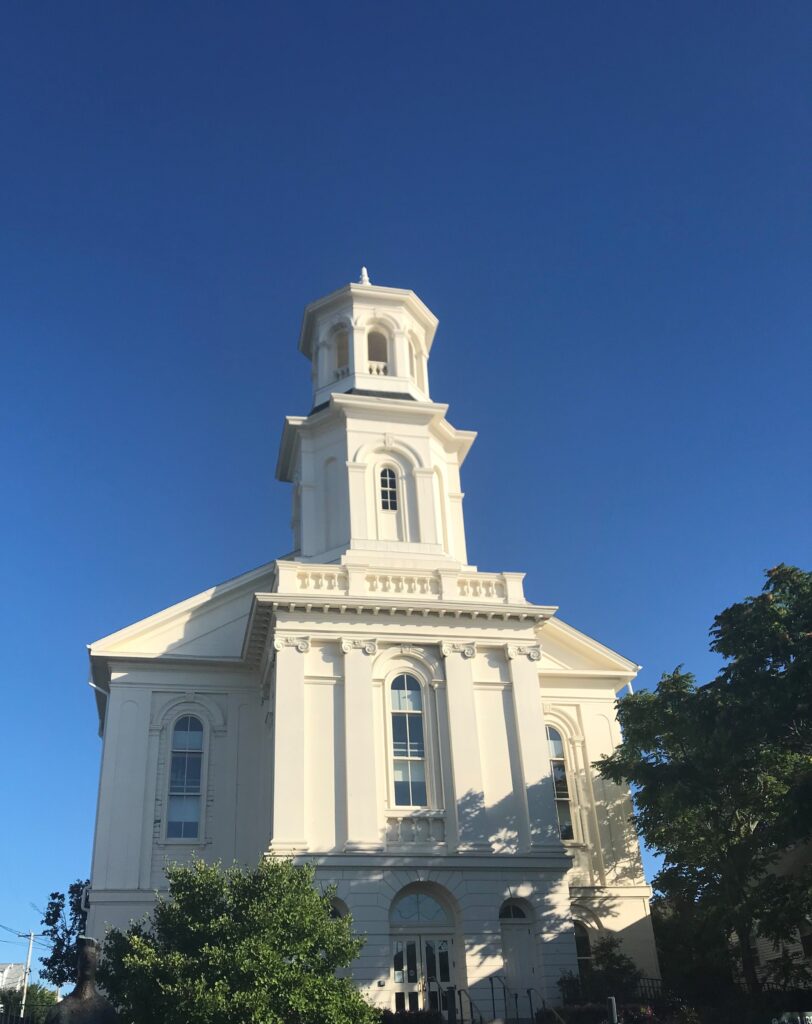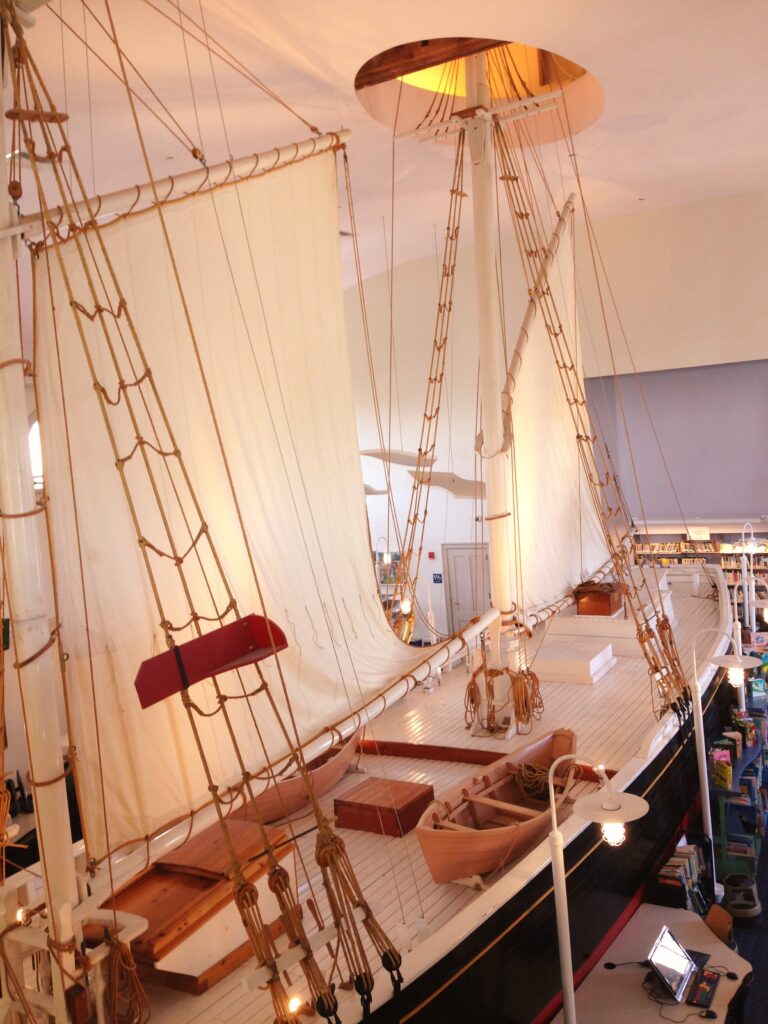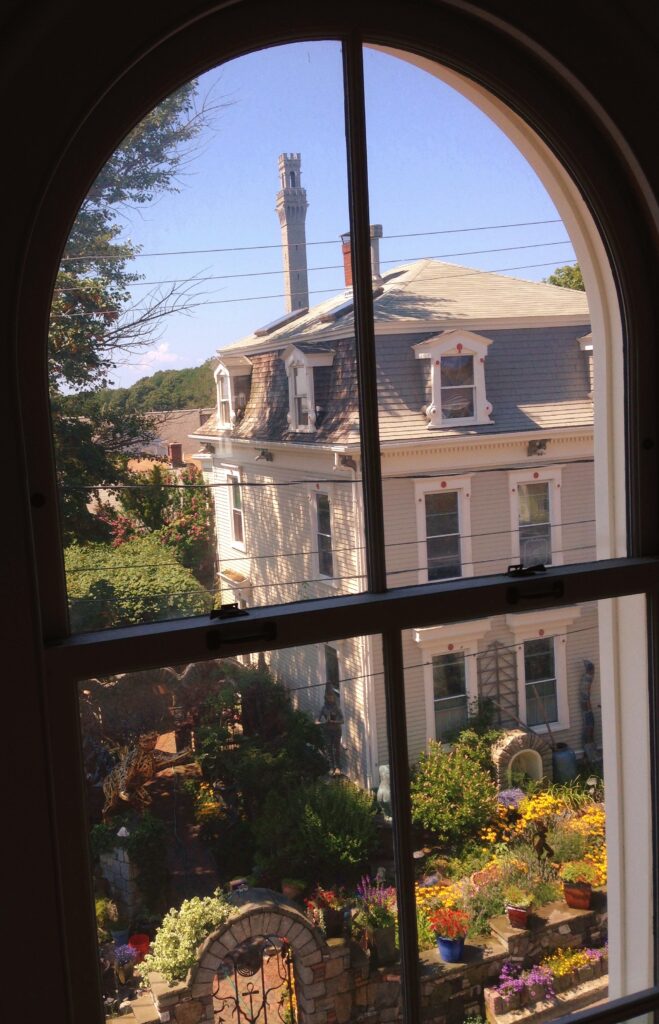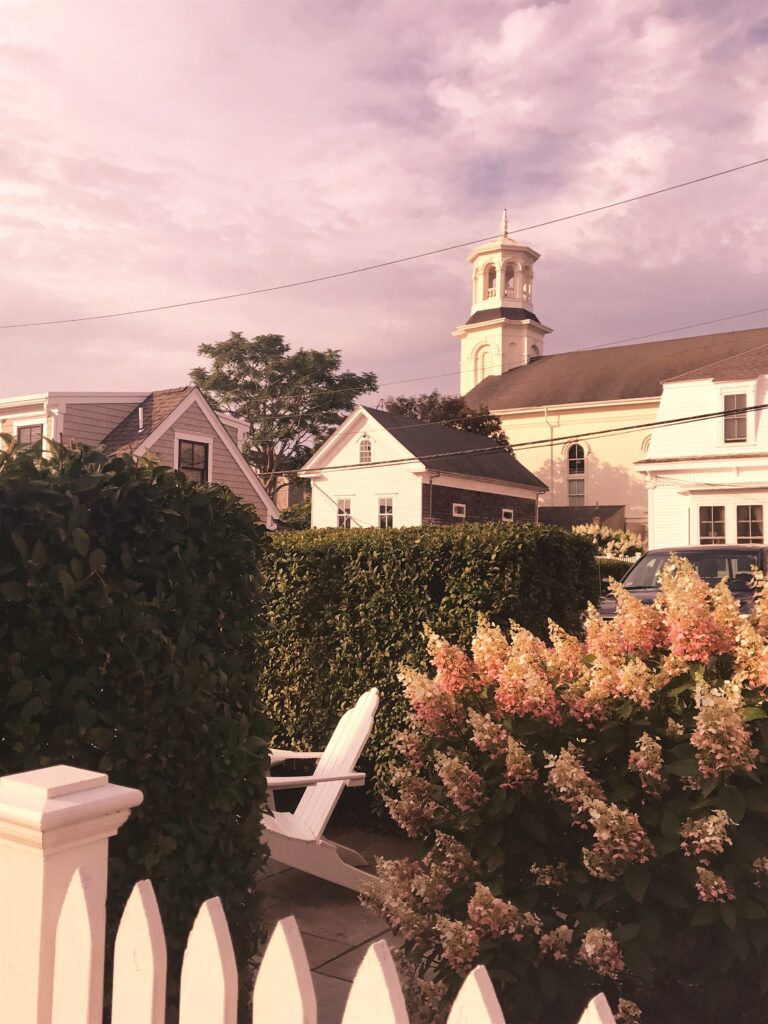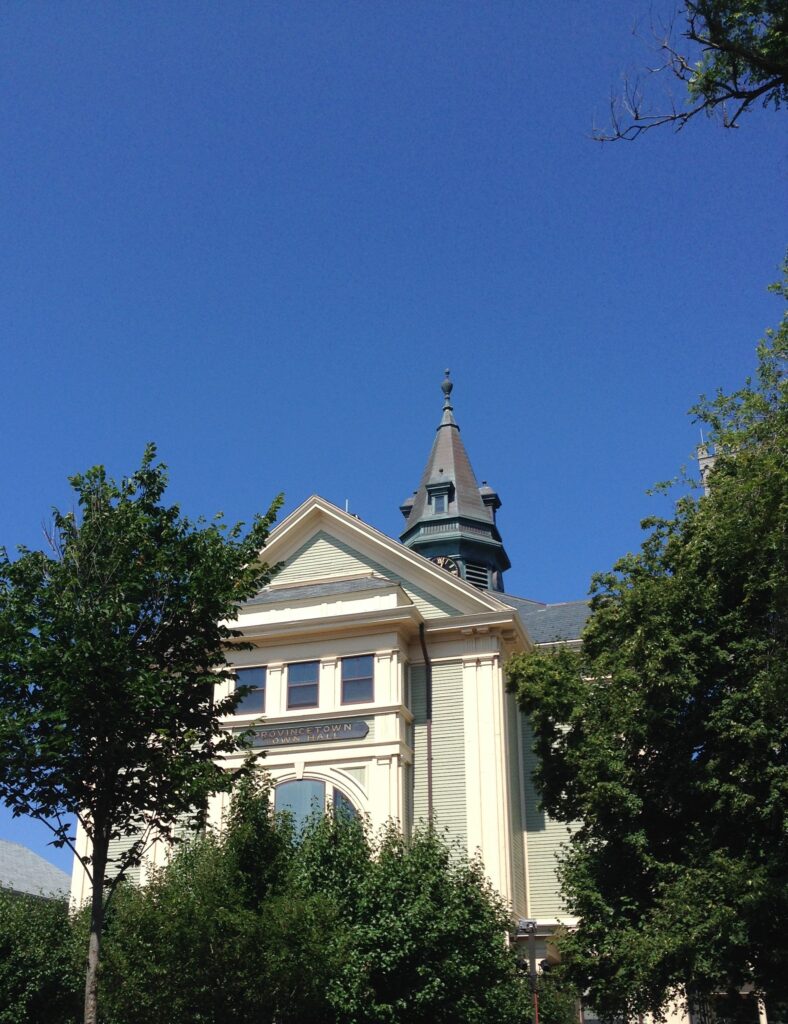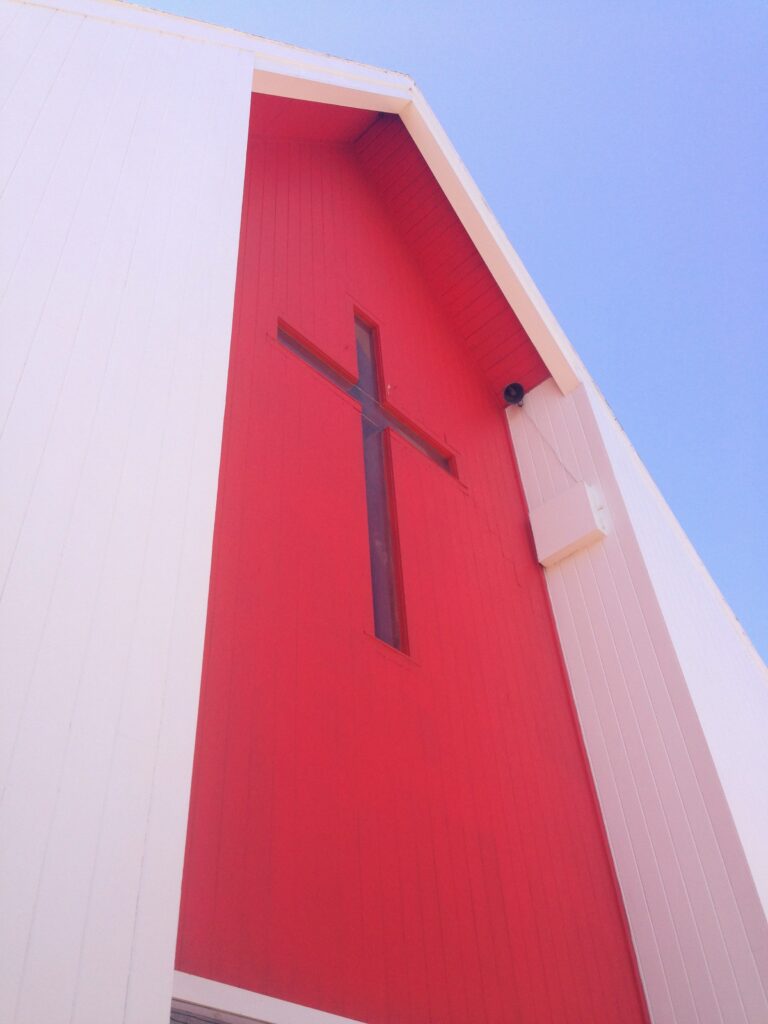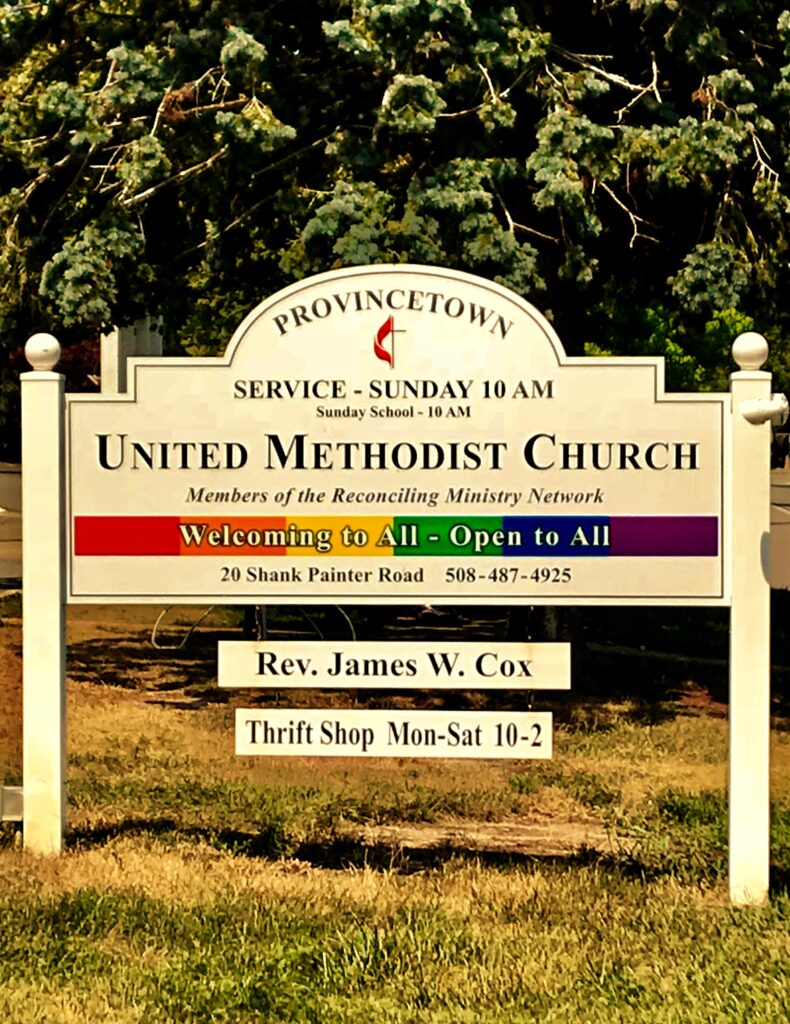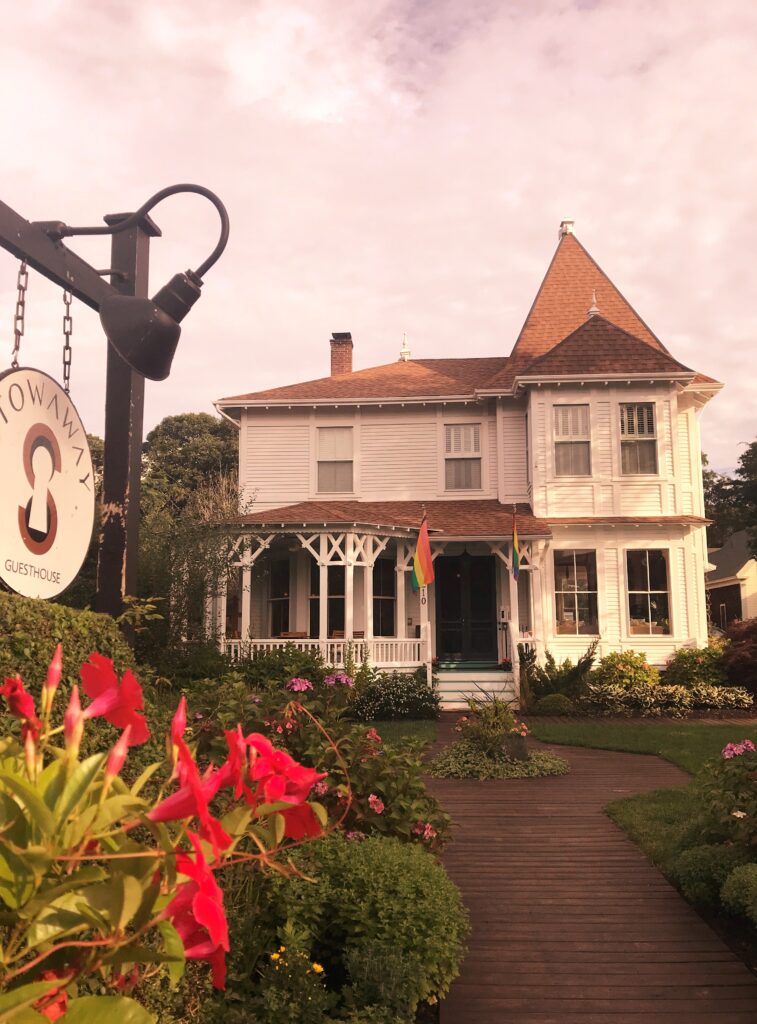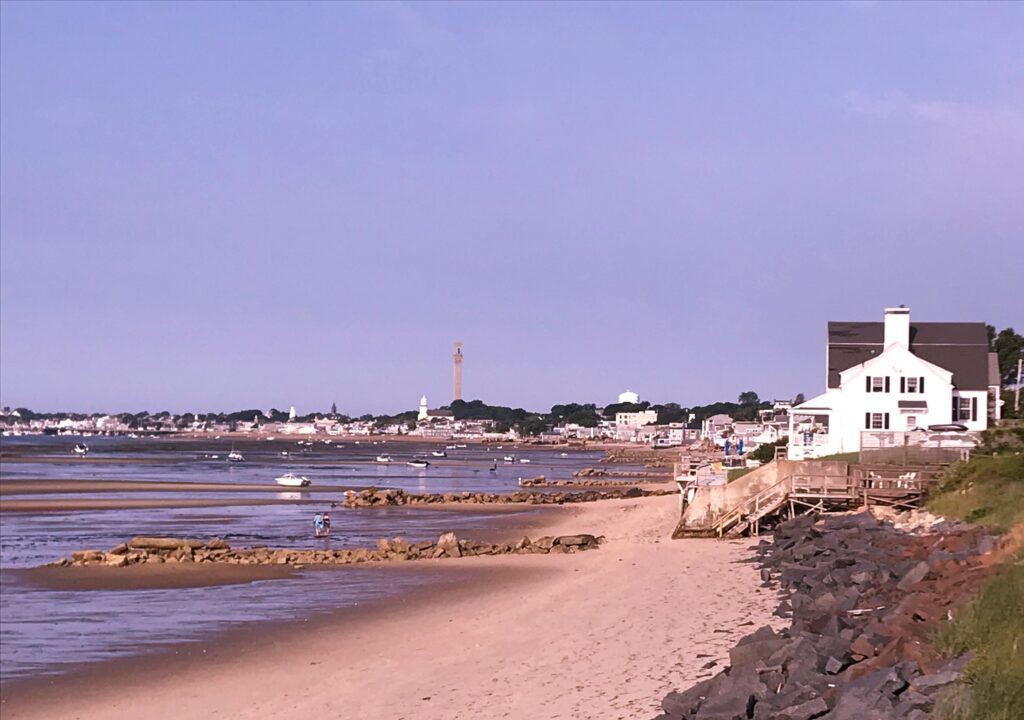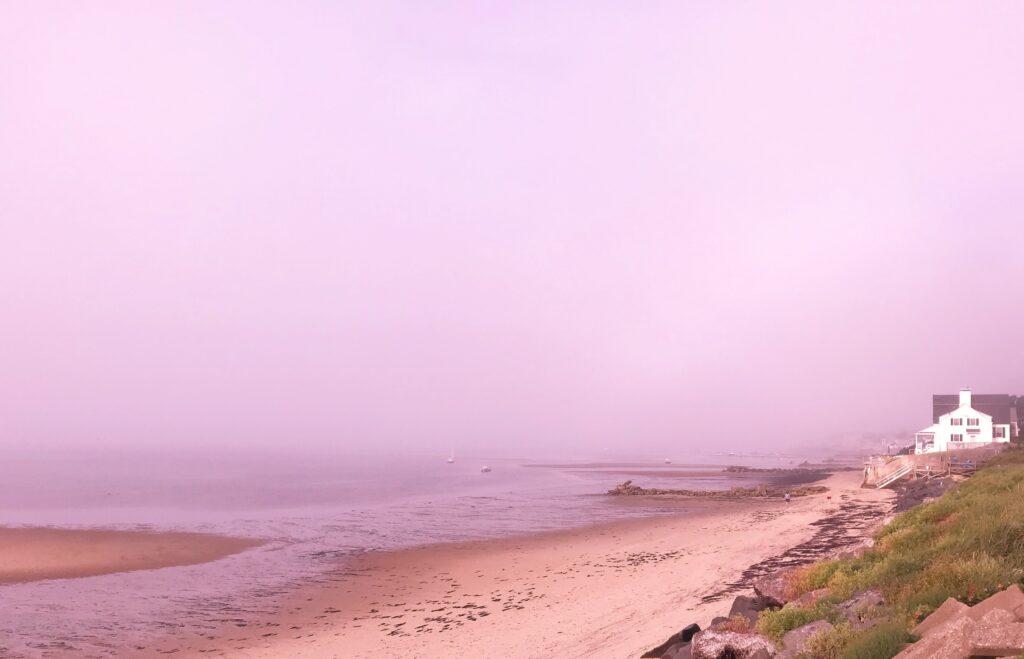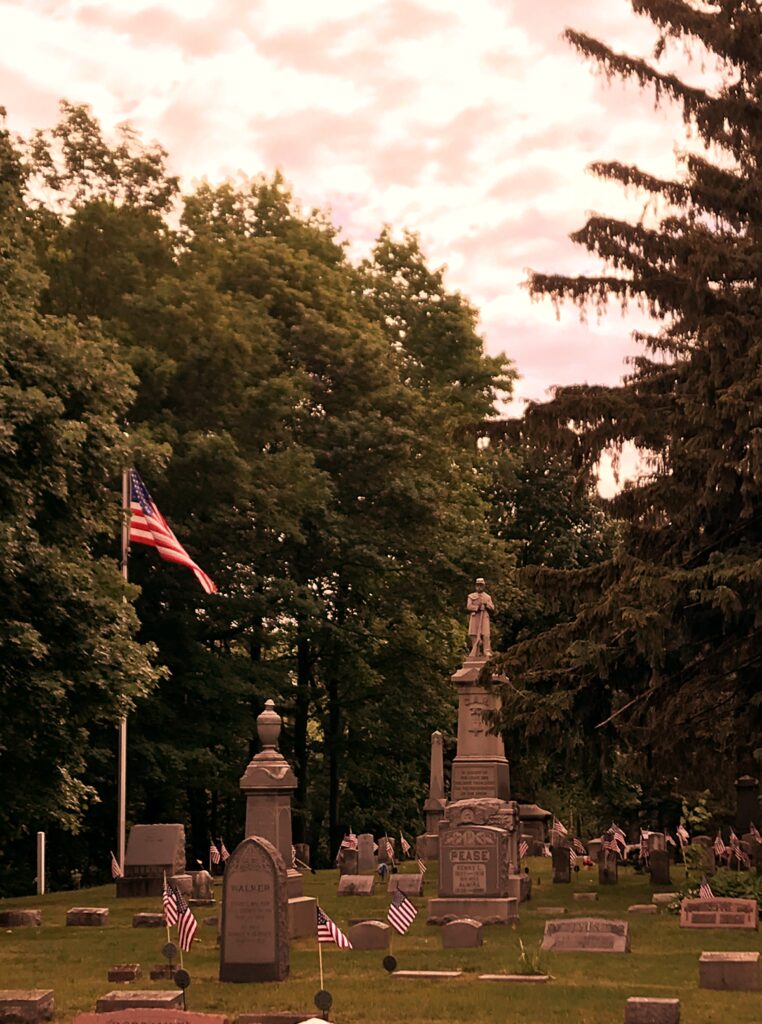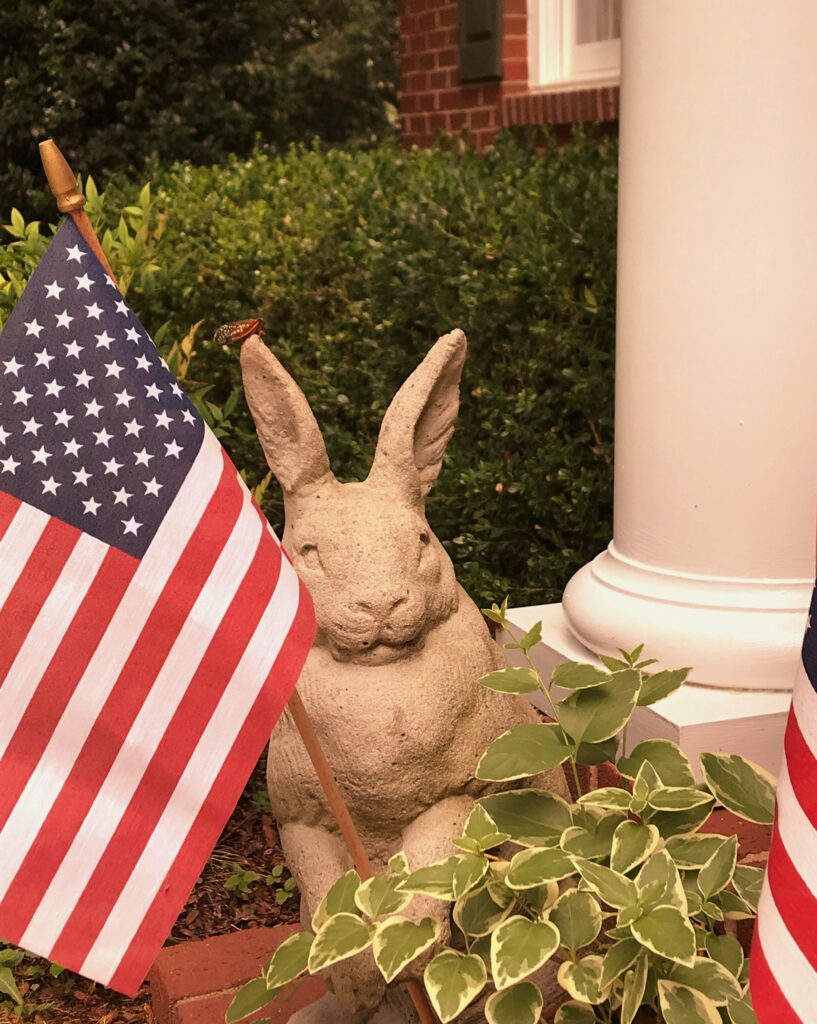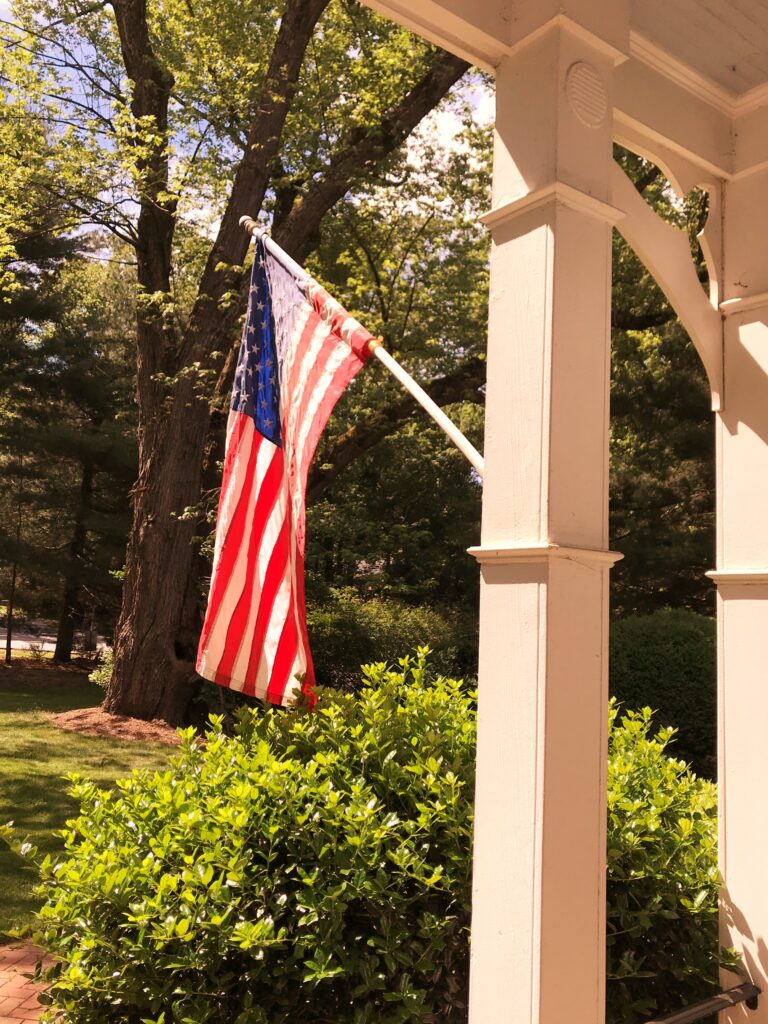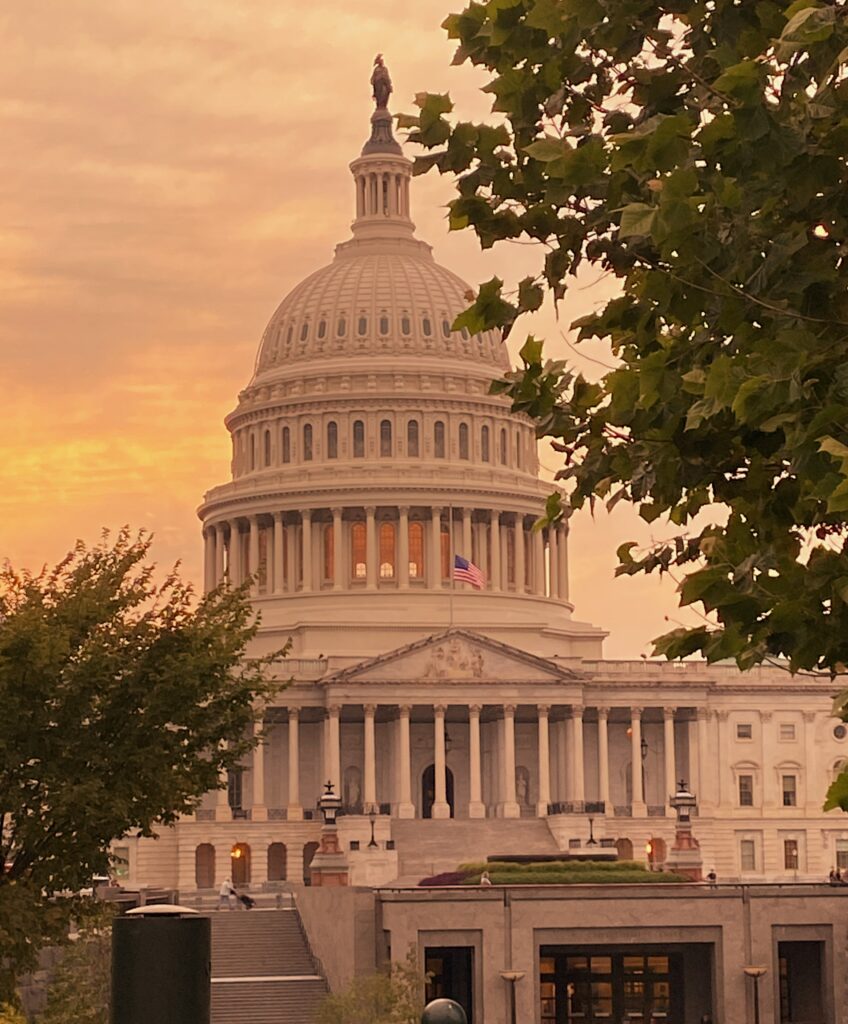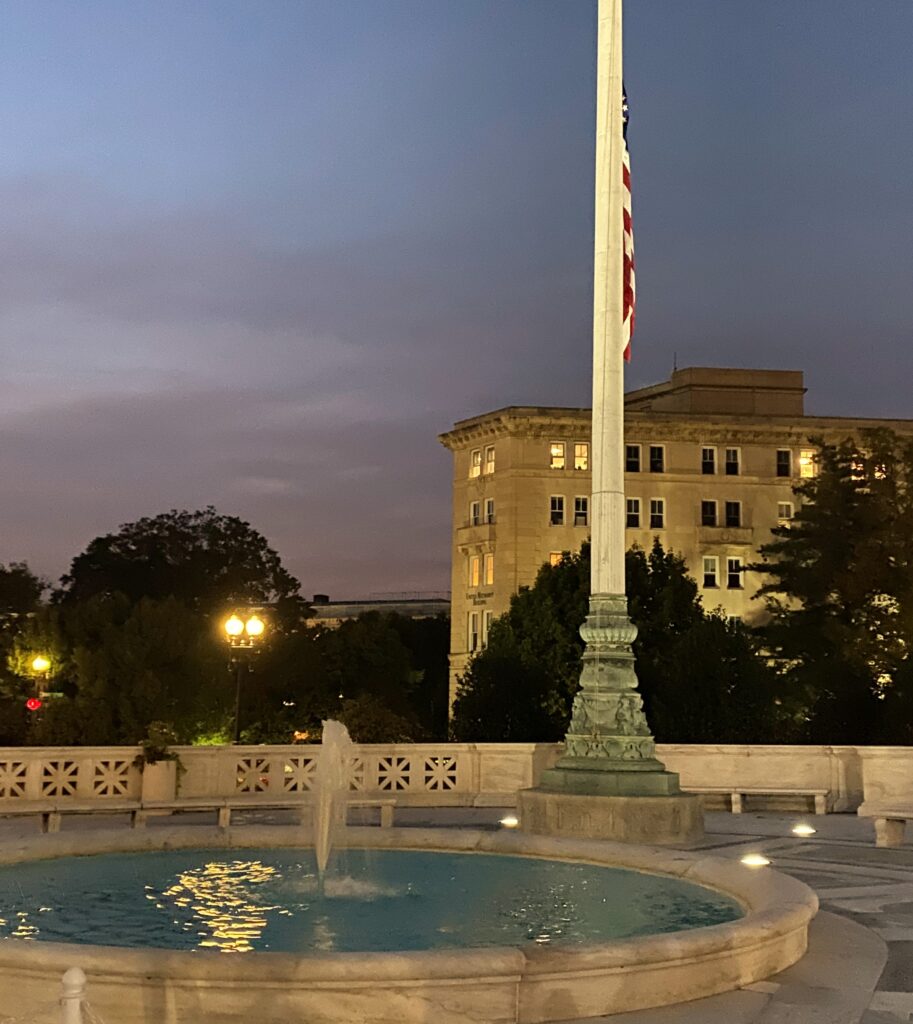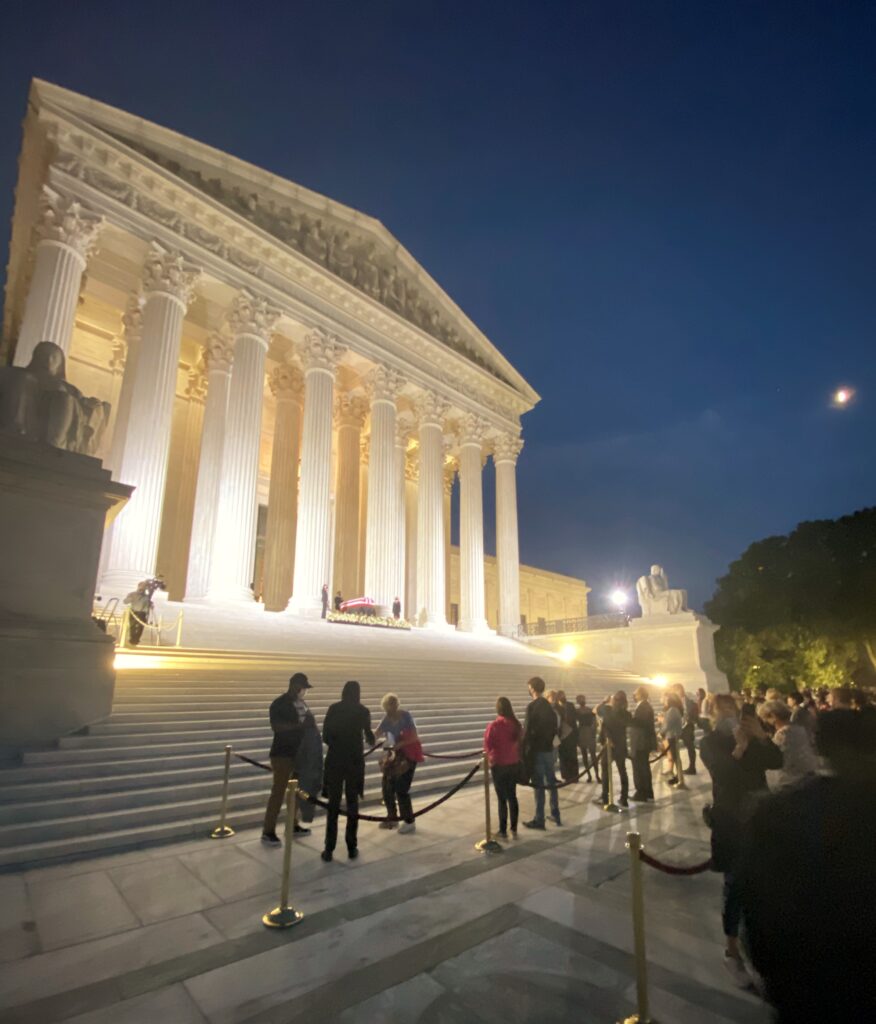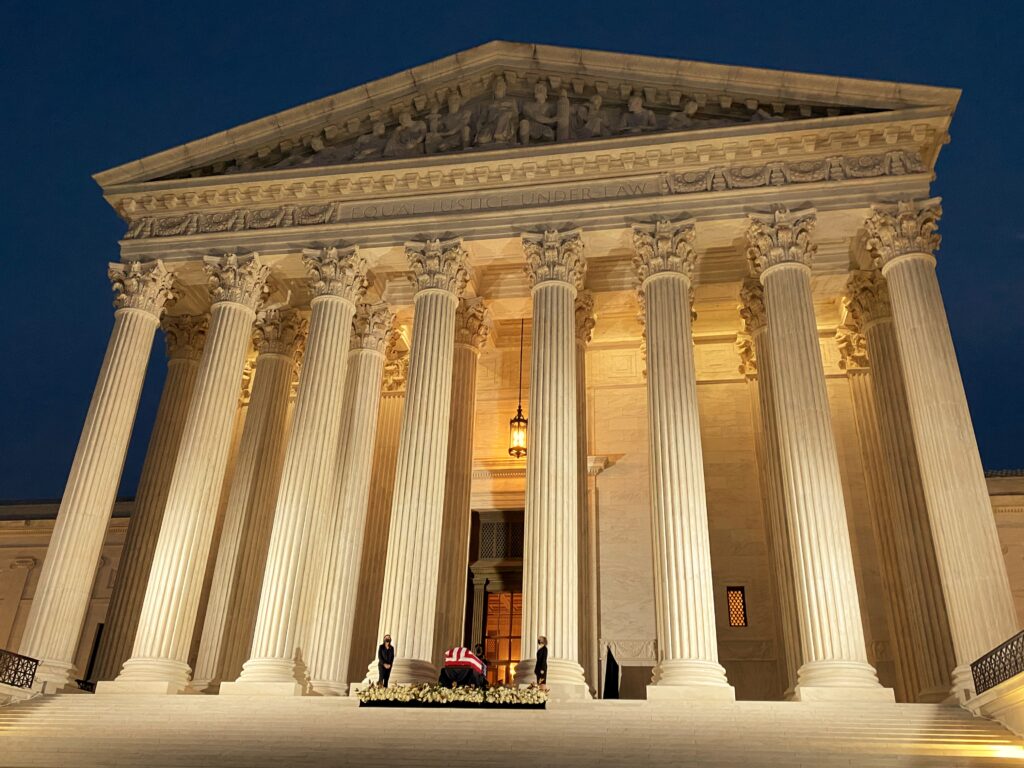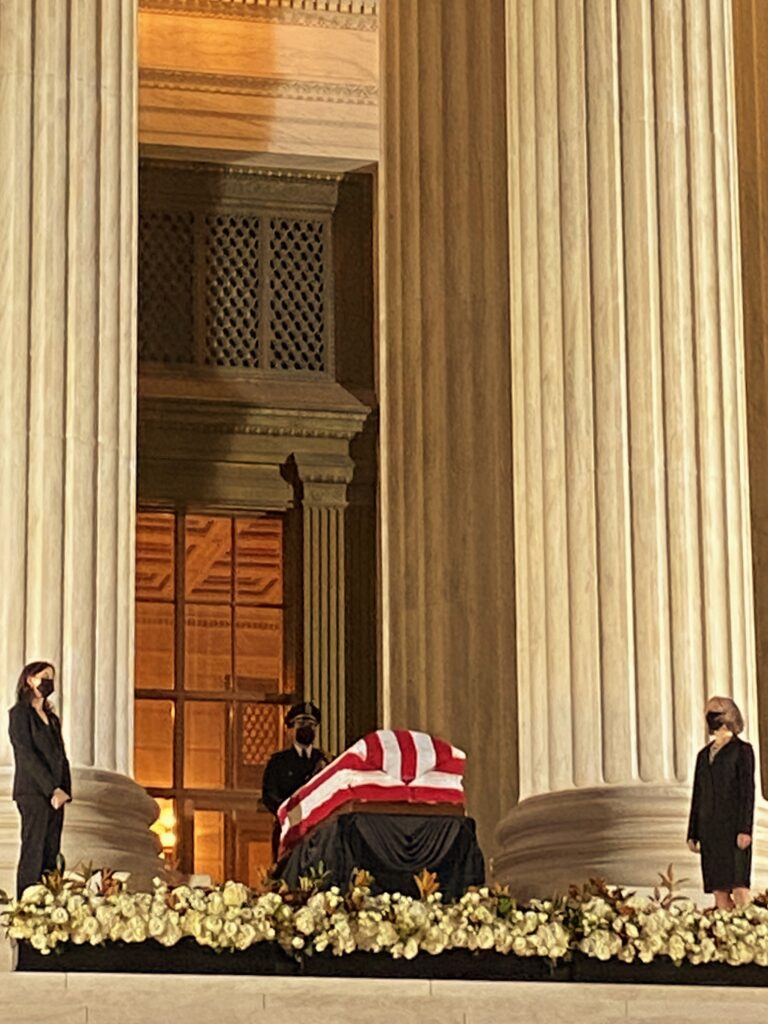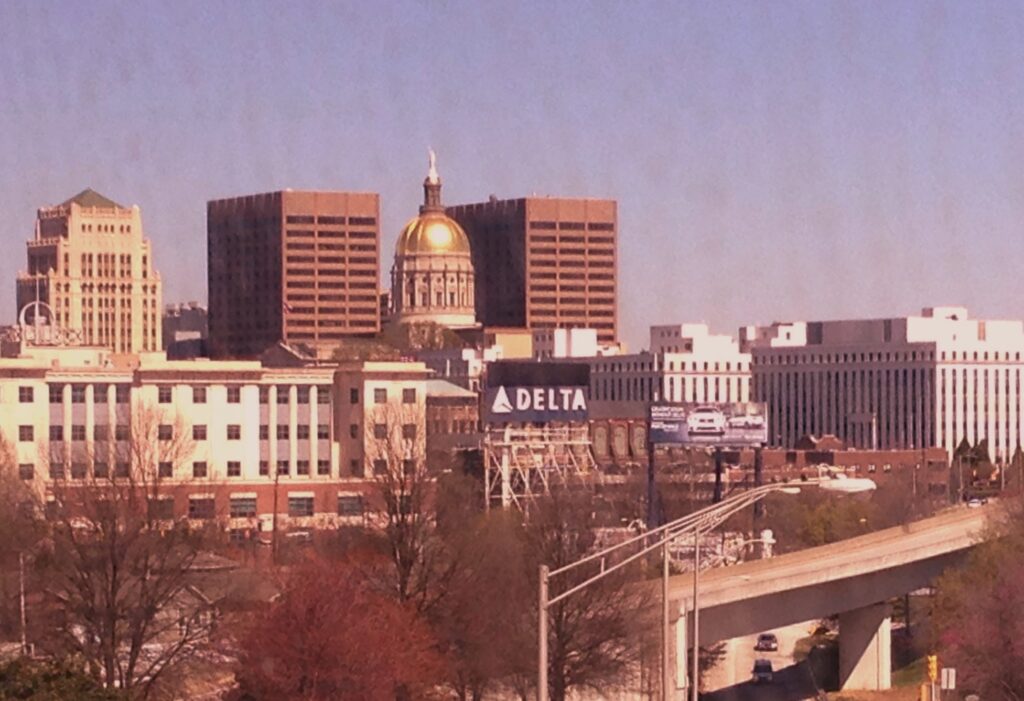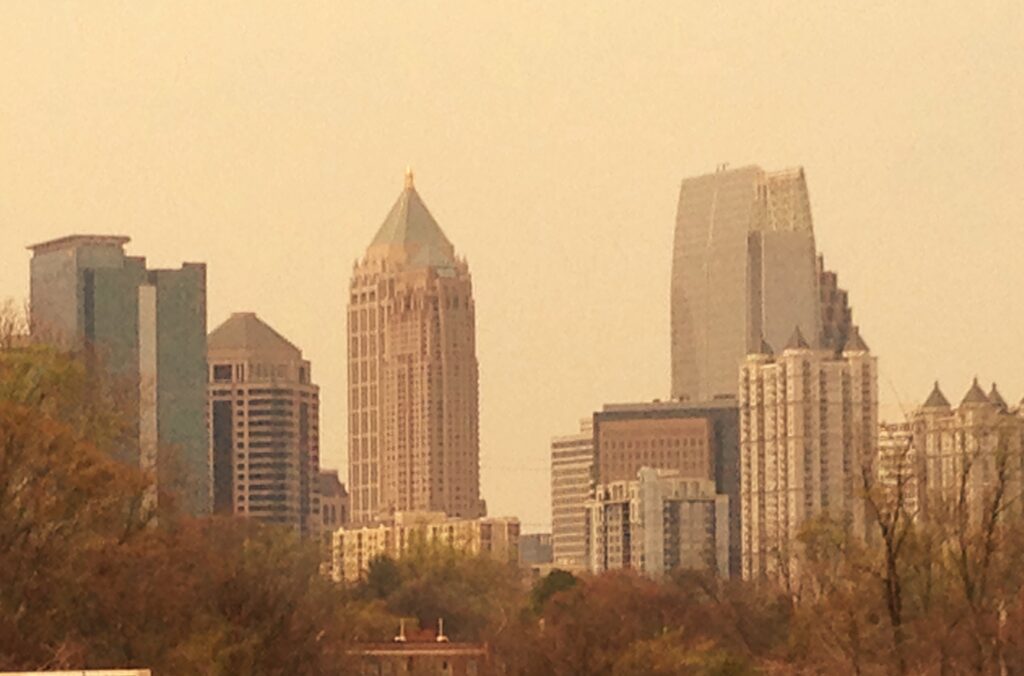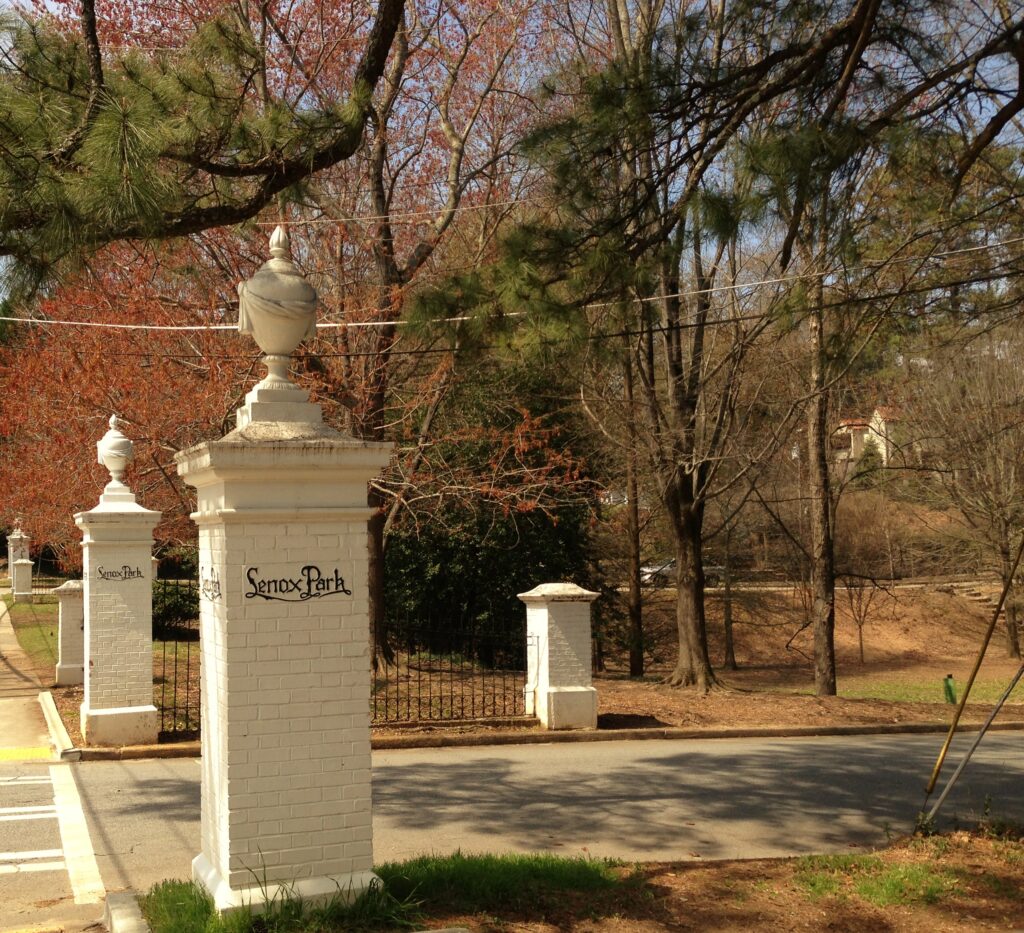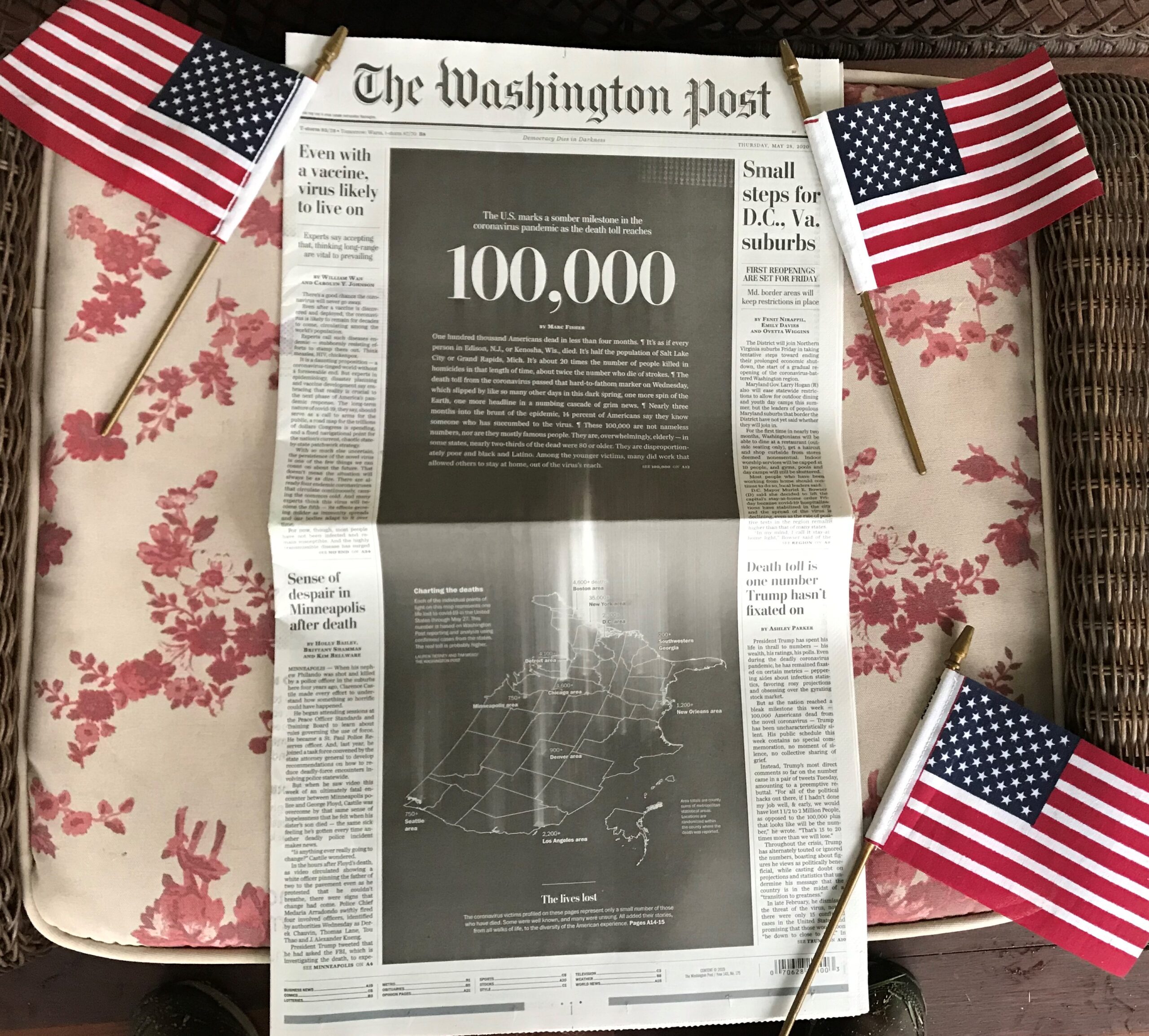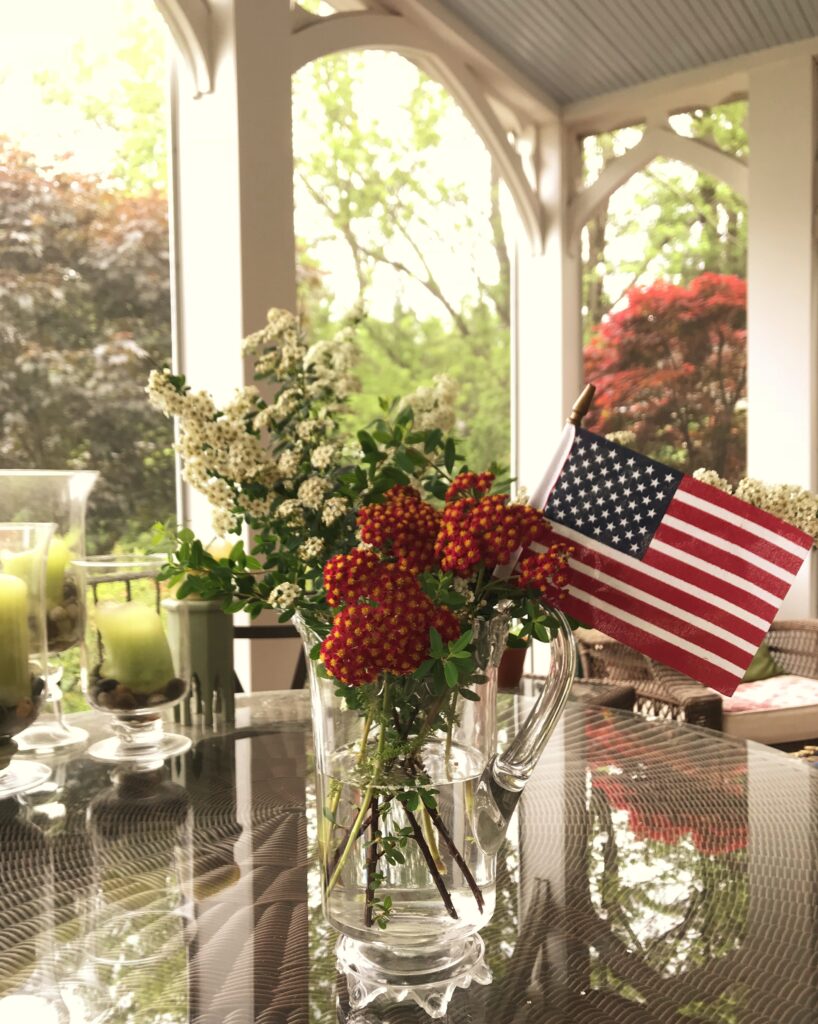Every year as summer deepens and July 4th comes and goes, my mind drifts back to some of my earliest memories. Over the Independence Day weekend in the early to mid-60s, my parents and I would join my mother’s side of the family in central Kentucky. July 4th would find us, not at my grandparents’ house in town, but, as we said, “up to the river.”
My maternal grandmother Nora spent her girlhood years, as well as much of her married life, on a rise overlooking the Rolling Fork River. Portions of the original log cabin on the site remained and had been incorporated into the white frame structure likely built in the mid-nineteenth century. Dates and details are lacking; my family tends to pass along the stories of the past haphazardly and in shattered, scattered fragments, so that the puzzle always remains incomplete. The photographic record is even more insubstantial. A couple of photos, above, from the 70s, show the farm, with its buildings, at a distance. I took some pictures of the house in 1986 (below) when it was in sad disrepair, after years of sitting vacant, shortly before demolition. I’ve been able to find no images that show it as the center of a thriving farm, and a happy, busy family home.
But I have memories of a time when it was exactly that. In those childhood days, my mother’s oldest brother Leland farmed the land by the river. By then, my grandparents had moved into the Queen Anne farmhouse on the Springfield Road in Lebanon that I remember with great fondness. Leland was the only one of my mother’s four siblings to follow in my grandfather’s footsteps as a farmer. He raised tobacco and Black Angus cattle. There were pigs, some sheep, and chickens, as well. When Leland and his wife Dessie moved into the old house in the 1940s, it lacked electricity and indoor plumbing. The structure was unassuming but relatively spacious. There was a wide staircase off the front entrance that led to several sizable bedrooms on the second floor. My grandmother and her two sisters, Alpha and Maude, had shared one room as little girls. Another was for her three brothers, Thomas, Clarence and George. My aunt and uncle, in the later years that I look back on, lived primarily on the first floor, using the upper rooms for storage. I vaguely remember, in one cozy downstairs space, an enormous brick or stone fireplace. It was suitable for a pioneer cabin, large enough to roast an entire side of beef. In a first floor bedroom, there was a narrow cupboard that could be locked with a heavy wooden bolt. It opened to reveal a slim staircase winding up to a single chamber, separate from the other bedrooms on the second floor. According to my mother, this was a feature common to rural homes of the time. An itinerant worker, or any stranger passing through, could be given a bed for the night, safely shut away from the rest of the family. A practical solution for extending hospitality to those we don’t know well enough to trust completely.
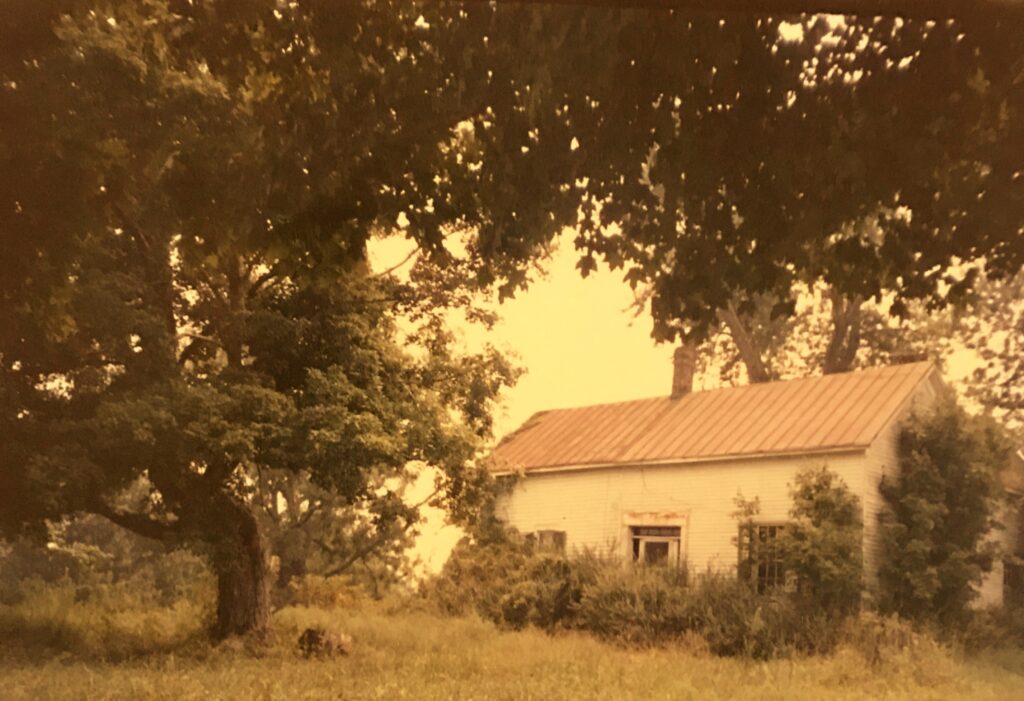
In my memories, certainly the farm at the river was nothing if not hospitable. While I can no longer picture the house and its grounds clearly in my mind, those fuzzy images nevertheless conjure a powerful sense of belonging. I’m not sure if I ever spent a night in that old house, but I passed enough time inside and around it, in the company of loved ones, to recognize it as a place that breathed the breath of home. It was our place. Not in the sense of ownership, but of affinity, of kinship.
And in this sense, the river was our river, a well-loved member of the family. The highlight of July 4th, for that young me, was the time we spent splashing in the water and wandering the banks. From the house, it was a pleasant walk, down the hill, across the road, and through part of a field. Geodes and arrowheads were there among the smooth stones of the banks, for those with the patience to look. I loved the tiny gray-green frogs that hopped about among the rocks. For the most part, the river near the farm was fairly shallow, but there were deeper spots suitable for swimming, and for the thrill of plunging into the water from a rope swing. Rumors of blue holes of unfathomable depths abounded. I was probably in second or third grade before I saw the ocean. “Going to the beach” was a foreign concept to me until I was a teenager. Our family had no need for the ocean. We were river people.
After an afternoon at the river in those old days, we’d head back up the hill for one of my aunt’s delicious meals. Now we’d refer to all the ingredients as locally sourced. Back then we just said home grown. There would be country ham or fried chicken, green beans, tomatoes, sweet onion slices, probably potato salad. Cornbread, always. My favorite dish was what we referred to as fried corn, which is fresh corn, straight from the field, cut from the cob and cooked on the stove in bacon grease or butter with a little milk and a bit of flour. It’s the luscious essence of summer on a plate.
Seems like we’d savor these festive summer meals outside, where we could gaze down on the river. We typically gathered in the front yard, seated in an assortment of metal garden chairs and webbed lawn chairs. The entire farm was a land of enchantment for me as a kid. In addition to the river, there was so much to explore and experience: my aunt’s extensive vegetable and flower gardens, an ancient grape arbor, a number of outbuildings, including the big barn, several ramshackle sheds, and a spring house cut into the side of a hill, still an effective outdoor source of refrigeration. There was the wildly overgrown remains of a one-room schoolhouse that my great-grandfather had built so his children could be taught year-round. Of course there was a privy, still in use after a bathroom was added to the house in the 50s. The ever-present threat of snakes added an element of the exotic.

The significance of our annual “4th up to the River” celebration is suggested by the existence of the photo above. It’s the extremely rare, posed family picture, and it’s nearly complete. Taken at the farm on July 4th, 1964, it includes my mother, her parents, her sister and three brothers, as well as four of the five siblings’ spouses. Only my Uncle Edwin’s wife, Betsy, is missing; she must have been the photographer. I’m in front with my parents, and my cousin, the son of my mother’s sister Jessie, stands in the center back. He is twelve years my senior. I don’t remember ever paying much attention to the absence of cousins about my age. I do remember enjoying the company, and the unique personalities, of everyone in this photo. As I recall, they did their best to keep me amused. Maybe I was akin to the dog who appears to consider itself a human; maybe I didn’t notice that I was the odd one out. I only know that despite my small size, I was never made to feel lesser. I was not talked down to or treated like a precious princess, it seems, but more or less as an equal. I learned to take humorous, good-hearted teasing as a compliment.
The older I get, the more I treasure my memories of those golden days with dear family up at the river. As I look back on that part of my childhood, glimpsed through the haze of decades, I feel again the abiding solace of knowing that I’m loved, knowing I belong, knowing I’m not alone. May the sacred ties of family, of friendship, and of place, beautifully entwined together to create the idea of home–may they never break, but stretch and expand. My daughter is another only child who was often surrounded by adults during her formative years. I pray that she carries with her a cache of cherished recollections that provide her with a similar sense of contentment and assurance.
Fifty-eight years after that family photo was taken, only my mother, my cousin and I remain here on earth. I pray that our future holds for us a reunion on the banks of another river, one glorious beyond imagination, in our true home.
Shall we gather at the river, where bright angel feet have trod,
with its crystal tide forever flowing by the throne of God?
Yes, we’ll gather at the river, the beautiful, the beautiful river,
gather with the saints at the river that flows by the throne of God.
–Shall We Gather at the River
words and music by Robert Lowry, 1864
